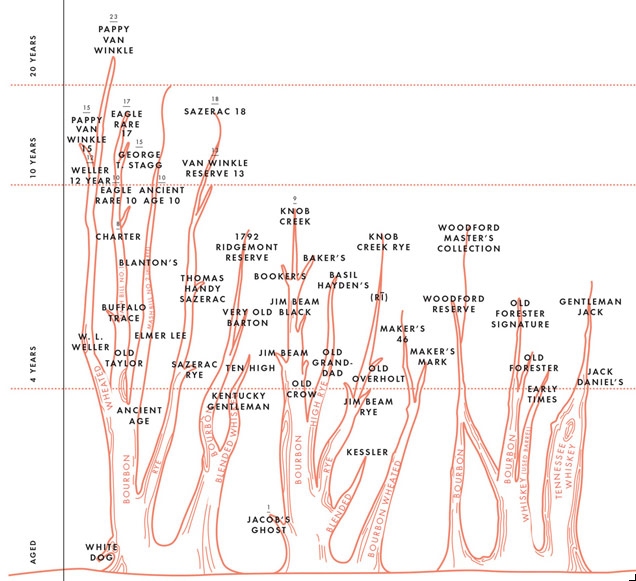The bourbon family tree
A chart of where many varieties of bourbon come from, along with five things you can learn from the chart.

Pappy Van Winkle is frequently described by both educated and uneducated drinkers as the best bourbon on the market. It is certainly aged for longer than most premium bourbons, and has earned a near hysterical following of people scrambling to get one of the very few bottles that are released each year. Of the long-aged bourbons, it seems to be aged very gently year-to-year, and this recommends it enormously. But if you, like most people, can’t find Pappy, try W. L. Weller. There’s a 12 year old variety that retails for $23 around the corner. Pappy 15-year sells for $699-$1000 even though it’s the exact same liquid as the Pappy (same mash bill, same spirit, same barrels); the only difference is it’s aged 3 years less.
The chart is taken from the Kings County Distillery Guide to Urban Moonshining.
Written by the founders of Kings County Distillery, New York City’s first distillery since Prohibition, this spirited illustrated book explores America’s age-old love affair with whiskey. It begins with chapters on whiskey’s history and culture from 1640 to today, when the DIY trend and the classic cocktail craze have conspired to make it the next big thing. For those thirsty for practical information, the book next provides a detailed, easy-to-follow guide to safe home distilling, complete with a list of supplies, step-by-step instructions, and helpful pictures, anecdotes, and tips.
(via df)





Stay Connected